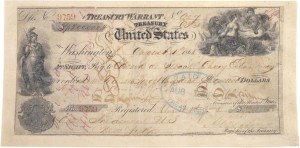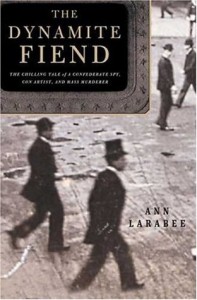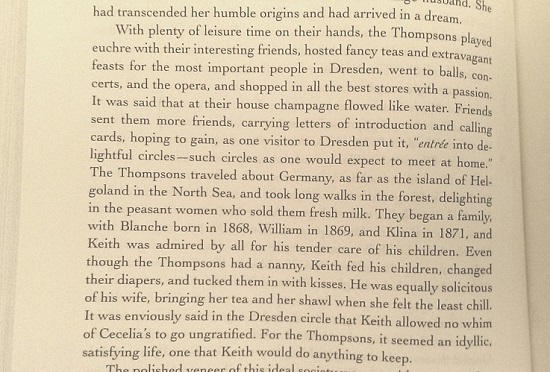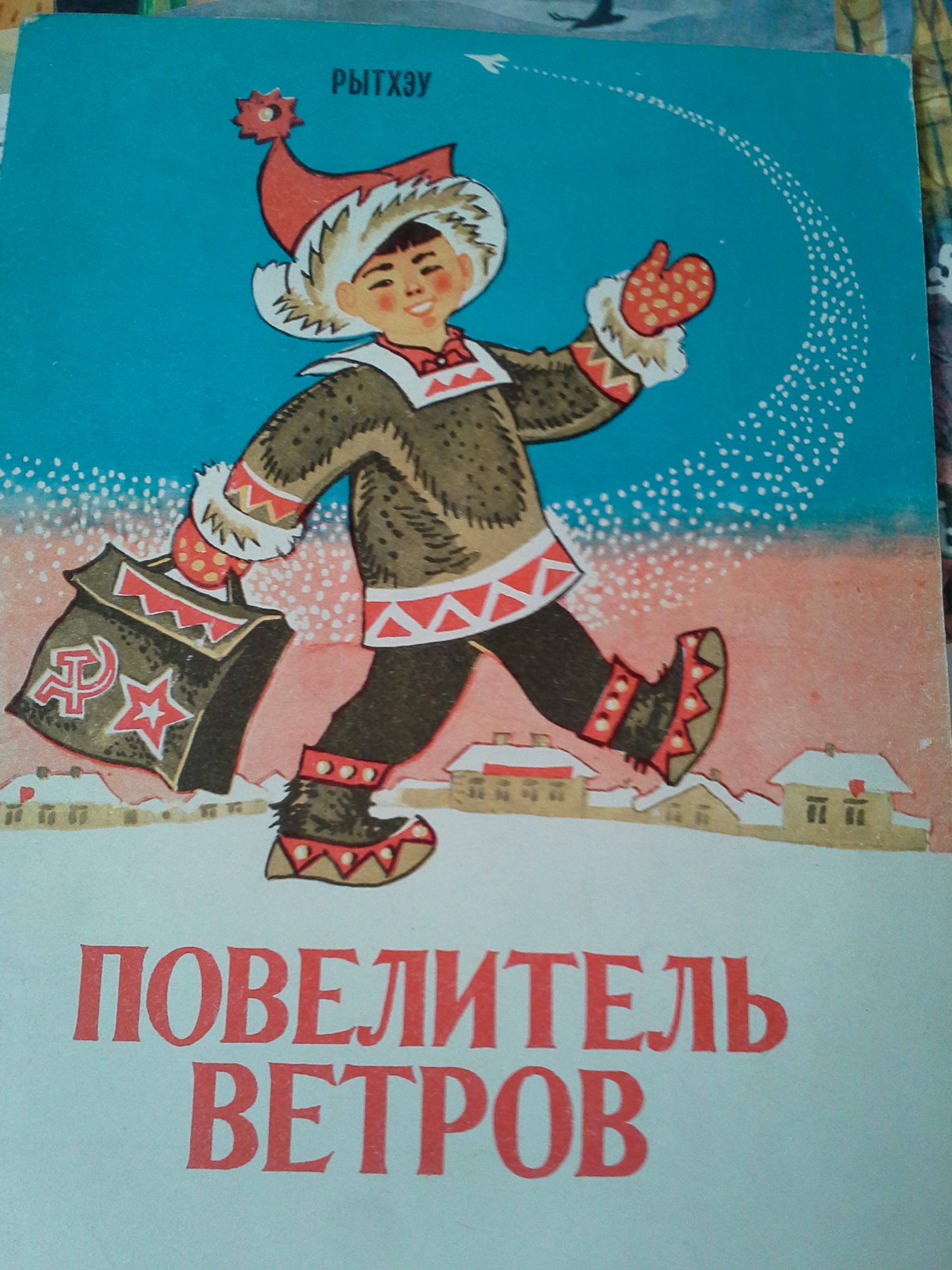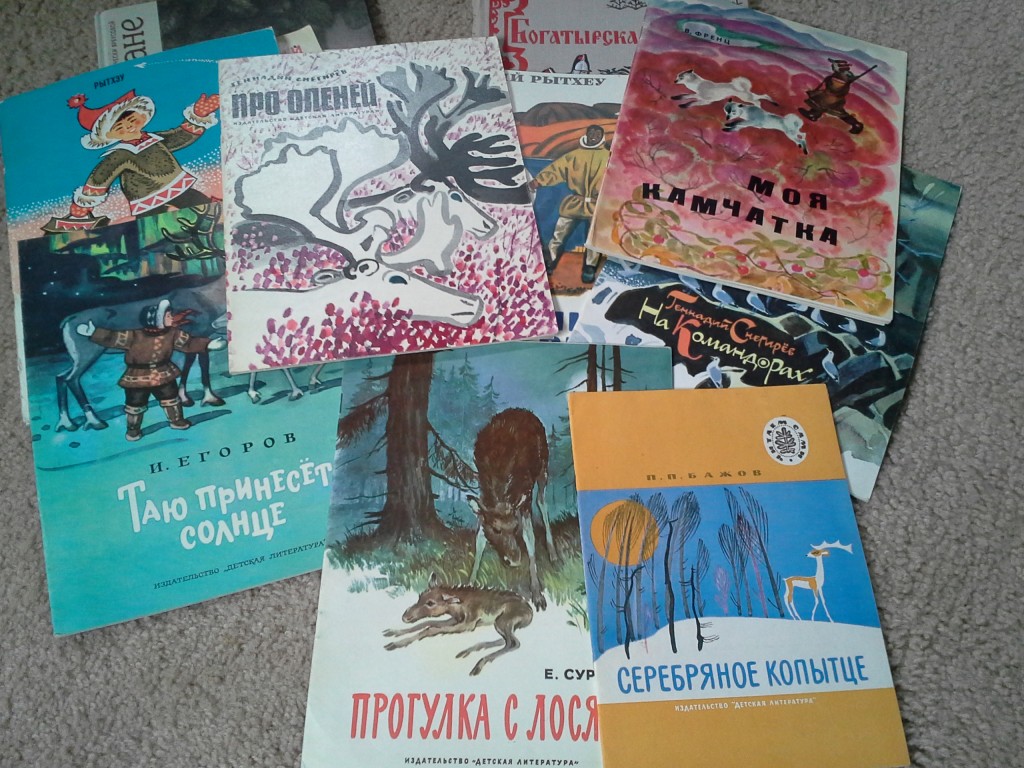Twice Sorry – A Russian Conspiracy Theory on the Alaska Purchase
Studying in Russia in 2003, I asked many Russians their thoughts on Alaska. One story I heard was that they never received any money for selling off the colony! I hadn’t heard that in my stateside history lessons, so I looked into it. Spoiler alert: I think it’s just a Russian conspiracy theory, but it did get me into some interesting history.
First, the American payment
America did pay out. We can all see a copy of the canceled check scanned from the Library of Congress.
$7.2 million, reportedly cashed out as gold bullion by Riggs National Bank in Washington, D.C. The $.2 m was for Eduard de Stoeckl, the Russian agent who had brokered the deal, and I imagine a good deal of that was used for palm-greasing. This is the same time period as Mark Twain writes about in The Gilded Age, after all.
It works out to $0.02 per acre, which is the factoid about the Alaska Purchase you may have retained from grade school. And as far as most English-language accounts of the sale go, that’s the end of it.
The Russian Conspiracy Theory
But let me translate the rest of the story, as circulated on the Russian internet:
In early July of 1868 the gold was loaded onto a ship named Orkney. On July 16, 1868, the Orkney sank before it could reach Saint Petersburg. The insurance company backing it went bankrupt.
No one knew what had happened until nearly a decade later, when a terrible tragedy occurred in Germany. On December 11, 1875, there was an explosion on the steamship called Mosel, preparing to depart from Bremen/Bremerhaven. Over a hundred people were killed and more injured. One of the injured? A US citizen named William Thomson, whose package had caused the explosion. He tried to shoot himself, but managed to linger for six days, during which he revealed the fate of the Orkney and other lost ships.
Thomson had been a Confederate saboteur during the Civil War and later gone to England. The British refused his services–but while in jail for drunken brawling, he met a man who, upon hearing of his profession, offered him a profitable job. Upon release he went to the port, got a job as a stevedore, and left a time bomb on board the Orkney. For this he was paid 1,000 pounds, roughly $350,000 today — an unheard of sum of money. When the money ran out, he pulled the same job once a year, getting insurance money for lost cargo. With the Mosel, his clock mechanism failed and went off early, putting an end to his criminal activity.
As a post-script, in 1975 a Soviet-Finnish searched for and found the remains of the Orkney, confirming that it had sunk after an explosion and fire. But! No gold was found.
That version comes to you from a content farmer on a website as dubious as the story.
But is it true?
Let’s dig in, though, because certain parts of the story are correct: William Thompson made a bomb that went off during the loading of the Mosel in Bremen. As he’d labeled the barrel containing it “CAVIAR”, the stevedores didn’t realize anything catastrophic would happen if it was dropped. William Thompson was one of several aliases used by Alexander Keith, a Scottish born Canadian who had worked with Confederates on sabotage and blockade running and lived in the United States before decamping to Germany. His bomb on the Mosel was part of plan to collect insurance money on his cargo (the “caviar”) when the ship didn’t complete the second leg of its journey (he would have debarked in Southampton, while the Mosel continued to America).
Here’s what doesn’t add up:
In this version, the Orkney sinks in mid-July, 1868. The canceled check from the US Treasury clearly shows a date of August 1, 1868. (Other variations I’ve seen do correct the sinking to 1869.)
Involvement of the Dynamite Fiend

Alexander Keith, alias Alexander King Thompson, alias William King Thomas, alias George S. Thomas, alias Mr. Garcie, etc. etc.
Sources on Alexander Keith (he gets his own Murderpedia page…) don’t mention the Orkney as a sunk ship he might have been responsible, though he has been suggested as responsible for the sinking of at least two other ships: the SS City Of Boston in January 1875 and the schooner Marie Victoria in 1864. But his connection to the Marie Victoria is doubtful and contemporary government reports (his crime inspired new legislation on both sides of the Atlantic) give the Mosel as his only confirmed maritime bombing.
There’s an 1895 report on to the United States Secretary of the Treasury on high & low explosives, which is nowhere near as thorough as the one given to the British Parliament by Her Majesty’s Inspector of Explosives, V.D. Majendie, Major R.A., directly after the Mosel bomb. In Majendie’s report, Keith’s deathbed confession is that he has a device on another ship, the Salier, which hadn’t yet left port — but when the Salier was searched, no bomb was found. Major Majendie also goes into some detail on the process which Keith went through to get his timebomb mechanism built, as does an article in the Australian Town & Country Journal, March 26, 1876. These details rather make me doubt that Keith/Thomas had been sending out timebombs for the last decade — wouldn’t he have had a system down? Instead, he’s running all over Germany, talking to different clockmakers and giving them conflicting stories about what he needs the specialized mechanism for.
It needs to run for 10 days and then strike once, which the force or a 30 pound hammer. That’s, umm, for cutting silk threads in a factory. No, it’s a kind of a timer for the workmen in a factory… Look, can you just build the thing and not ask so many questions?
Plus, I grabbed a copy of Keith’s biography from the library. And while some of the reviews have quibbled with the author’s narrative excesses, she does give him a direct route from America to Germany — with $45,000 in his pocket — in 1866 as he flees from the various people in North America he’s bilked out of large sums of money. In 1868 he’s still in Germany, living the high life in Dresden and presumably on hand for the birth of his wife’s first two children, born 1868 and 1869. There are no side stories about Keith being picked up for drunken brawling in England. Plus, while he doesn’t seem like the sort of guy to pass up £1,000 (between $8,000 and $9,000 at the time), he also does not look like the sort who would pass for a stevedore. His schemes are all about pretending to be an upperclass business partner.
Here’s the relevant passage on page 102 of The Dynamite Fiend. Judge for yourself.
The mysterious ship Orkney
And there’s the part where I can’t find any mention whatsoever of a ship called the Orkney going missing in 1868. The Lloyd’s Register of Shipping does have an Orkney Lass in the 1868-69 register, but as far as I can decipher, she’s on a route to South America, not Saint Petersburg. That’s how she’s listed in the 1866-67 register — and the 1870-71 register, too. That’s a 318 ton ship listed with Lloyd’s — there’s also a 66 ton smack of the same name in England, which is around in 1885 to help another smack in distress, and a 267 ton lumber schooner on the Great Lakes between 1874 and 1891.
I do have a vague memory of looking for information on this theory in the past and coming across a mention of a pocket watch found off the coast of Sweden that was linked to the lost Orkney — but I can’t find it now.
Finally, an an answer from an academic
In the 2002 edition of the journal Amerikanskii Ezhegodnik (American Yearbook), we have an article by A. Yu. Petrov titled “Money received after Alaska Purchase were spent on the Rail Road Construction in Russia.” Petrov went to the State Historical Archives and found a document on how the monies were spent. Specifically, it was spent abroad on supplies to build the Kursk-Kiev, Ryazan, Kozlovsky, Moscow-Ryazan and other railway lines.
Okay, yes — that does mean the cold hard cash never made it to Saint Petersburg. But only because international economics didn’t actually involve shipping massive amounts of gold around the world in 1868 any more than it does today. I know the Spanish Empire did it in the 16th century, but by the 19th century we have the telegraph and the ability to wire money. Sorry, conspiracy theorists – no mysterious sabotaged ships, just international finance and economic development. The only remaining mystery is whether the Russians got any accrued interest from the United States after the year delay in payment — and I’m going to guess “no” on that one.
